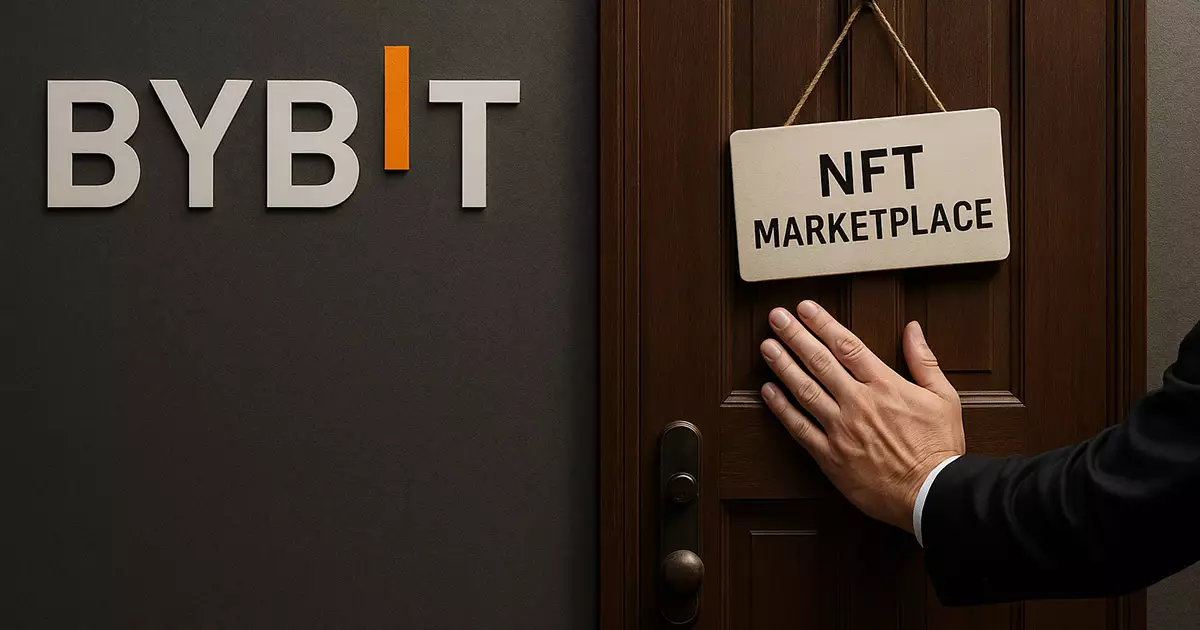The digital landscape is ever-changing, and the once-promising world of NFTs seems to be suffering a rapid decline, exemplified by Bybit’s recent announcement to phase out its NFT Marketplace, along with its related offerings. The decision to wind down operations by April 8 serves as a clear indicator that even established platforms can no longer ignore the undeniable truth: the NFT bubble has burst. As trading volumes and user engagement have plummeted more than 95% since the market’s feverish peak in 2021, one has to question what went wrong in this promising sector.
A Wake-Up Call for Investors
In a market that was once filled with excitement and eager speculation, the recent downturn should be a wake-up call for investors. Bybit’s closure comes on the heels of similar retreats from its rivals, including Kraken and LG Electronics, both of which have recognized the unsustainable nature of digital collectibles. Collectively, the data reveals a distressing narrative—in just two years, active wallets engaging in NFT trades dwindled from over half a million to under 20,000. Investors, once blinded by the allure of digital assets, must now face the reality that what they assumed was an upward trajectory was in fact a precarious bubble, inflated by hype and speculation.
Market Dynamics and the New Normal
This downturn isn’t an isolated incident. A broader trend indicates that institutional interest in NFTs is waning, and public sentiment has shifted markedly. The alarming statistics don’t lie: total NFT sales dropped to $1.5 billion in Q1, a staggering 63% decline from the previous year. March’s performance alone showcased a 76% nosedive, underlining a market struggling to maintain any semblance of vitality. The prominent names once celebrated for their game-changing potential, such as the Bored Ape Yacht Club, now struggle to attract significant trading volumes. This decline begs critical introspection—how many valuable lessons remain unlearned from this investment saga?
The Lingering Shadows of Security Concerns
Compounding these challenges are serious security risks that plague the cryptocurrency market. Bybit’s retreat follows a major hack attributed to North Korean cybercriminals, resulting in a staggering loss of $1.4 billion. Such incidents not only strain the operational integrity of exchanges but also erode users’ trust. When the stakes involve not just investments but personal assets, it becomes evident that the legitimacy of these marketplaces is under threat. Diminished demand and decreasing volumes are dire enough, but the specter of security breaches adds an insidious layer to the challenges these platforms face.
A Few Bright Spots in a Dimming Landscape
Although the general market trend is disheartening, a handful of niche collections continue to defy the prevailing narrative. Projects like Pudgy Penguins and Doodles have managed to maintain momentum, securing notable partnerships and rising sales figures. Yet, such exceptions should not distract from the broader assessment of the NFT market’s preposterous decline. It begs the question: will these bright spots be enough to reinvigorate a sector that many once viewed as the future of digital ownership?
The NFT marketplace appears to be irrevocably transformed. The challenges it now faces include not only falling demand and diminishing engagement but also the imperative to adopt safer practices. As the dust settles on this once-vibrant sector, investors and creators alike must reassess their strategies in an environment where the future is uncertain and fraught with unforeseen challenges.

